The quest to understand the formation mechanisms of globular clusters was limited by the Hubble Space Telescope’s ability to peer back in time. Now, JWST’s larger mirror has allowed astronomers to find gravitationally lensed galaxies that have globular clusters almost nine billion years old. Plus, two new super-mercury exoplanets, This Week in Space History, and an interview with Eric Palmer about the DART mission.
Podcast
Show Notes
Globular clusters: Already old 9 Billion years ago
- Webb reveals a galaxy sparkling with the universe’s oldest star clusters (EurekAlert)
- “The Sparkler: Evolved High-redshift Globular Cluster Candidates Captured by JWST,” Lamiya Mowla et al., 2022 September 29, The Astrophysical Journal Letters
ESPRESSO finds two super-mercuries in five-planet system
- IA press release
- “HD 23472: a multi-planetary system with three super-Earths and two potential super-Mercuries,” S. C. C. Barros et al., 2022 September 27, Astronomy & Astrophysics
Hubble and JWST release DART impact images
- ESA press release
- Hubblesite press release
- Webb Space Telescope press release
This Week in Space History: Alouette 1
- Alouette 1 (NASA)
- Alouette-ISIS Program Summary (NSSDC/IEEE)
Transcript
We have finally made it to the end of an asteroid-filled week, full of DART this and DART that, including the actual impact of the spacecraft into Didymos’s moon Didymoon… I mean, Dimorphos. Like any highly anticipated mission, the media hype was on point, and the mission teams were exhausted. I hope you all enjoyed my slightly giddy interview with Amanda Sickafoose that we recorded the following morning.
Today, while we do have one more pair of DART images to share today, we also have a new exoplanetary system and a really distant globular cluster to talk about.
All this and more – like this week in space history – today, here on the Daily Space.
Pamela is still battling her injury, so I am your host, Beth Johnson.
And we are here to put science in your brains.
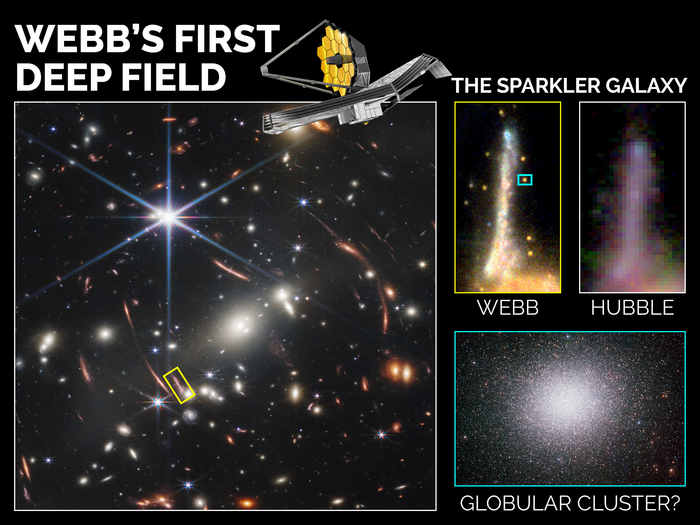
One of the most fun ways to track down objects in our galaxy is the ancient globular clusters. They swarm in a sphere around the disc of the Milky Way, and many are older than the bulk of the stars in our galaxy. As we’ve been able to look at more and more galaxies, we have only found a handful of youngish globular clusters. These few systems hint at violent origins within the shockwaves of merging systems.
It has been hoped that as we look farther and farther back in time by looking at more and more distant systems whose light takes time to reach us, we’ll be able to find younger clusters and perhaps even discover the time when globular cluster formation was common.
Hubble tried. Hubble looked back as far as it could directly look with the Hubble Deep Fields. Hubble peered at lensed systems made visible by the gravity of massive galaxy clusters, but all it saw were fuzzy smears. Hubble tried, but Hubble’s 2.5-meter mirror was just too small to do the job.
But now we have JWST, with its 6.6-meter mirror, and amazing new possibilities.
In JWST’s first deep-field image, an image of a galaxy cluster, distant lensed galaxies are seen with never-before realized clarity. This image alone will take years to fully analyze!
One of the first papers to come out from this image was led by Lamiya Mowla and appears in The Astronomical Journal. This nine-page analysis focuses on just one distant galaxy magnified by the cluster’s gravity, called the Sparkler. According to Chris Willott: Our study of the Sparkler highlights the tremendous power in combining the unique capabilities of JWST with the natural magnification afforded by gravitational lensing.
And the cluster’s gravity shows us three lensed versions of this one system. From these differently distorted images, researchers were able to determine the sparkler is nine billion light years away, and the Sparkler was already old, with no longer star-forming globular clusters just 4.5 billion years after our universe formed! According to team member Kartheik G. Iyer: Looking at the first images from JWST and discovering old globular clusters around distant galaxies was an incredible moment, one that wasn’t possible with previous Hubble Space Telescope imaging.
And it was a moment in which we gained no insight into how globular clusters form. Like Athena emerging fully adult from Zeus’s head, globular clusters just keep emerging fully formed in our images.
I, for one, am hoping that future research on other lensed systems will reveal even more ancient galaxies and, just once, let us clearly see how globular clusters form.
Okay, new topic. While globular origins remain elusive, planets are making themselves seen.
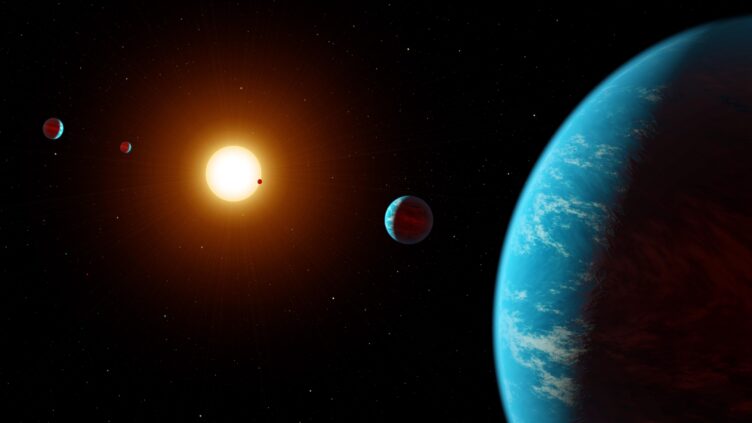
It’s been a few weeks since we had a good exoplanet discovery announcement, and the last one involved baby exoplanets. This week, in a new paper published in Astronomy & Astrophysics with lead author Susana Barros, a team using the ESPRESSO spectrograph at the Very Large Telescope has announced the discovery of a five-planet system around star HD 23472.
What’s really exciting about this particular discovery is that two of those newly found exoplanets are what are called ‘super-mercuries’. To date, we have only found eight of this type of planet, including these latest two, and as Barros explains: [The team set out to] study the transition between having or not having an atmosphere, which could be related to the evaporation of the atmosphere due to the irradiation of the star.
Mercury is a strange little planet in our solar system. The core of the innermost world is relatively large and the mantle is relatively small compared to the other planets orbiting our Sun. And we don’t understand the reason. Perhaps there was a massive impact that removed bits of the planet or perhaps that nearness to the Sun evaporated some of the mantle. Now we’re finding similar worlds in other systems, and Barros notes: For the first time we have discovered a system with two super-mercuries. This allows us to obtain clues about how these planets were formed, which…appears to be connected to the composition of the parent star. This new system can help us find out.
The masses of the planets were measured with the radial velocity method, and from the measurements of HD 23472, the team found that three of the five planets have masses smaller than that of Earth, making these some of the lightest exoplanets discovered. The two super-mercuries are both about 0.8 Earth radii. For comparison, Mercury’s radius is about one-third that of Earth’s.
Unfortunately, further characterization of these two exoplanets will have to wait until the Extremely Large Telescope is built, as the current instruments available do not have the sensitivity to gain information about the planets’ compositions or possible atmospheres.
Did you think we were done with DART this week? We’re not. Along with yesterday’s interview with Amanda Sickafoose, later on in the show, I will be back with Eric Palmer to talk about his work with the mission.
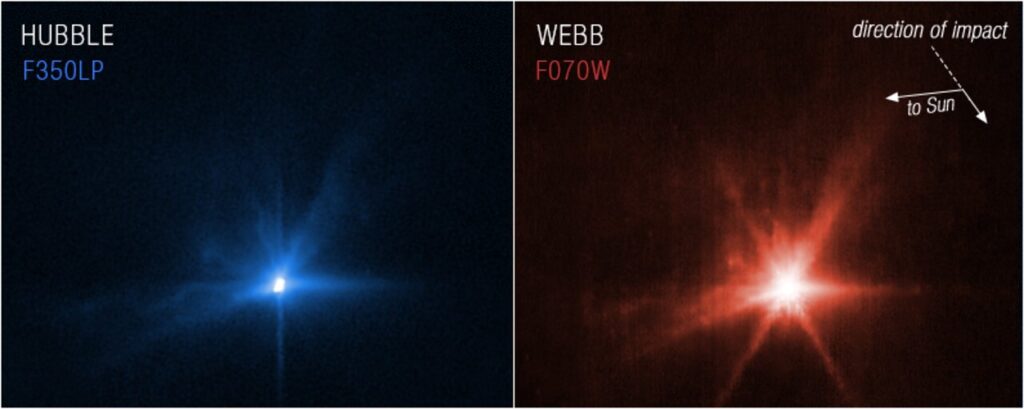
But first, we get to bring you new images of the impact’s ejecta cloud. In an astronomy first, both the Hubble Space Telescope and JWST took observations of the same object at the same time – in this case, the moonlet asteroid Dimorphos. The two space telescopes captured images of Dimorphos before and after being impacted by the DART spacecraft.
JWST’s image, shown in red, was taken with the Near-Infrared Camera and shows a compact core as well as plumes of ejecta surrounding that center. Hubble’s image, shown in blue, was taken in visible light about 15 minutes after the impact. The ejecta is stretching out from Dimorphos, with a larger spike coming out from where the spacecraft actually hit the surface.
JWST took 10 images over five hours, and will capture spectroscopic data in the coming months. Hubble captured 45 images total and will monitor Dimorphos ten more times in the next three weeks, focusing on the ejecta cloud and how it changes over time.
We’ll keep you up to date as more images and data are released. And for those listening to the podcast, you can see the images in our show notes at DailySpace.org.
Coming up next, Erik Madaus brings this week in space history. And after that, we’ll get to my prerecorded interview with Eric Palmer.
This Week in Space History
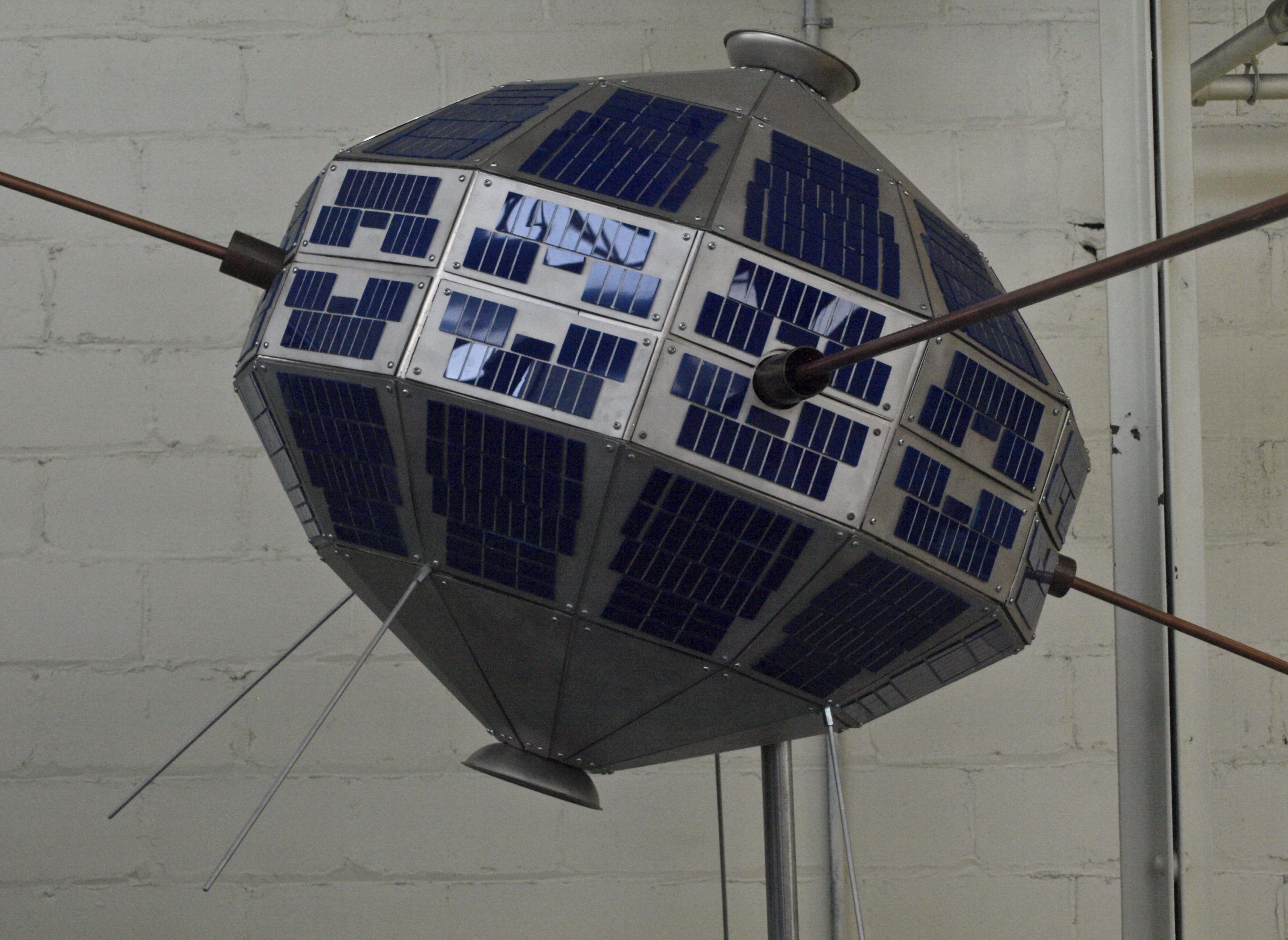
Before there were several generations of Canadarm and Chris Hadfield, there was Alouette 1, Canada’s first satellite and the first collaboration between Canada and NASA. This Week in Space History has that story.
Alouette 1 began as a project of the International Geophysical Year of 1957 to 58, much like the first satellites of the U.S. and USSR. A Canadian government organization named the Defense Research Telecommunications Establishment responded to a NASA Request for Proposals in December 1958, starting the project. The satellite was designed to study the upper half of the ionosphere, something not possible from the surface of the Earth. To do this, it would carry an instrument similar to the type used to study the ionosphere from the surface, called a sounder. Canada would build the satellite and NASA would launch it and allow the use of its extensive ground station network to receive data from it. The UK also contributed two ground stations in exchange for access to the data.
All of these ground stations were critical to the success of the project because the Alouette 1 satellite lacked onboard data storage. It gathered data continuously but only sent it back while in contact with the ground. Engineers chose this to make the most reliable satellite possible with the technology of the day.
With agreements in place, work got underway to prove that the planned instruments would actually work in space. To do this, two antennae, similar to the ones that would be on the satellite, were launched on a sounding rocket into the ionosphere on two occasions in 1961. The tests were successful.
Alouette 1 launched with two radio antennas for its experiment, one almost 46 meters in size and the other nearly 23 meters, which were deployed from inside the spacecraft when it reached orbit. These were the longest antennas launched at the time.
Alouette 1 was launched from Vandenberg Air Force Base Site 75-1-2, now known as SLC-2W at Vandenberg Space Force Base, on September 29, 1962, aboard a Thor-Agena rocket. It was put into a 1000-kilometer orbit inclined 80 degrees to the equator. Alouette 1 operated for ten years, despite a decrease in its spin rate and the Starfish Prime space nuclear test several months prior to its launch which damaged or destroyed ten other satellites.
The success of Alouette 1 led to an expanded program called the International Satellites for Ionospheric Studies, which continued with a further five satellites operated through 1990. Alouette 2 was launched in 1965; it was the flight spare for Alouette 1 refurbished for flight.
The expanded program included France, Norway, Japan, New Zealand, Australia, Finland, and South Africa.
Statistics
And now, for some statistics.
The number of toilets in space is nine: four on the ISS, one on Soyuz MS-21, one on Soyuz MS-22, one on the Crew Dragon Freedom, one on Tianhe, and one on Shenzhou 14.
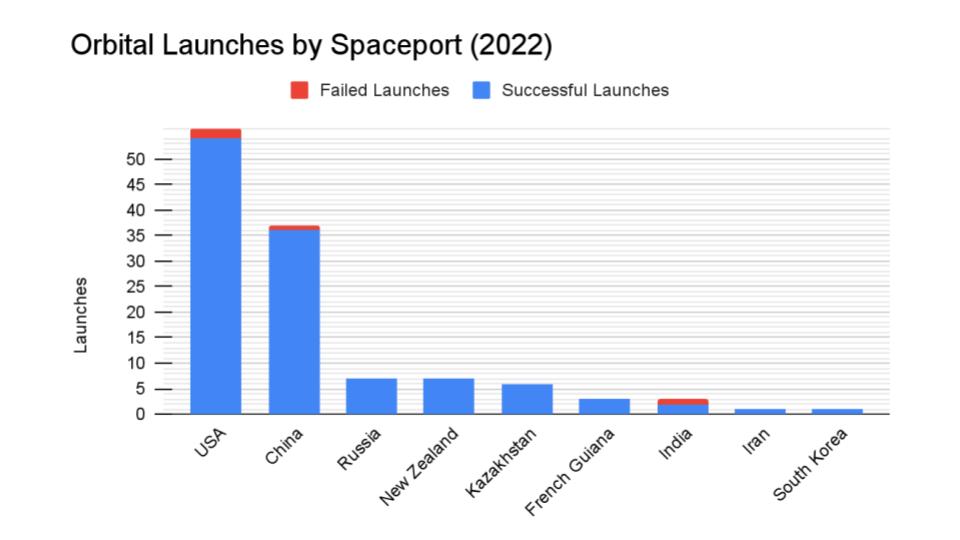
We keep track of orbital launches by launch site, also called spaceport. Here’s that breakdown:
USA: 56
China: 37
Russia: 7
New Zealand: 7
Kazakhstan: 6
French Guiana: 3
India: 3
Iran: 1
South Korea: 1
From those 121 launches, a total of 1,886 spacecraft have been put into orbit in 2022, with 1,456 of them being Starlinks, which is about seven out of every ten satellites launched so far this year.
Your random space fact for this week is that Alouette 1 held the record for most publications from a single spacecraft data until the early 1970s. The record was only broken by much larger and more complicated spacecraft such as OGO 5.
Interview
It’s been a DART extravaganza this week at the Daily Space and indeed all over the planetary science community. In case you have been living under a rock, or are still scarred by counting rocks on Bennu, the DART mission successfully booped… or possibly smacked… into the asteroid Dimorphos on Monday, September 26. Joining us today is Eric Palmer, a senior scientist at the Planetary Science Institute who was involved in the shape modeling of the asteroid Didymos.
Thank you for joining us today, Eric.
Once again, thank you for joining us today. We look forward to all the results that will be coming out of the DART mission.
This has been the Daily Space.
To all of you watching, our prerecorded interview ran longer than we can air here on NowMedia. You can catch the conversation in its entirety on our website, DailySpace.org.
While you’re there, check out our show notes to find more information on all our stories, including images. As always, we’re here thanks to the donations of people like you. If you like our content, please consider joining our Patreon at Patreon.com/CosmoQuestX.
Credits
Written by Pamela Gay, Annie Wilson, Beth Johnson, Erik Madaus, and Gordon Dewis
Hosted by Pamela Gay, Beth Johnson, and Erik Madaus
Audio and Video Editing by Ally Pelphrey
Content Editing by Beth Johnson
Intro and Outro music by Kevin MacLeod, https://incompetech.com/music/


 We record most shows live, on Twitch. Follow us today to get alerts when we go live.
We record most shows live, on Twitch. Follow us today to get alerts when we go live.